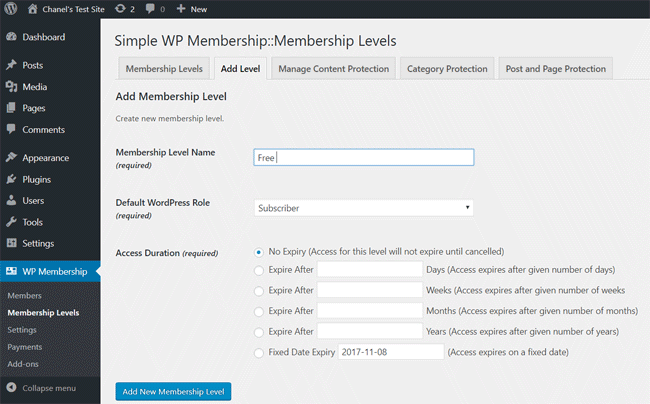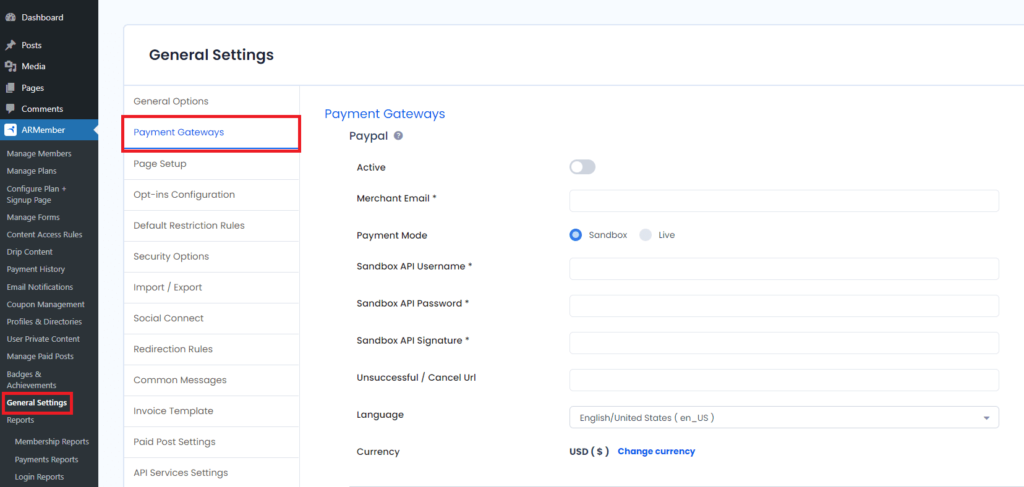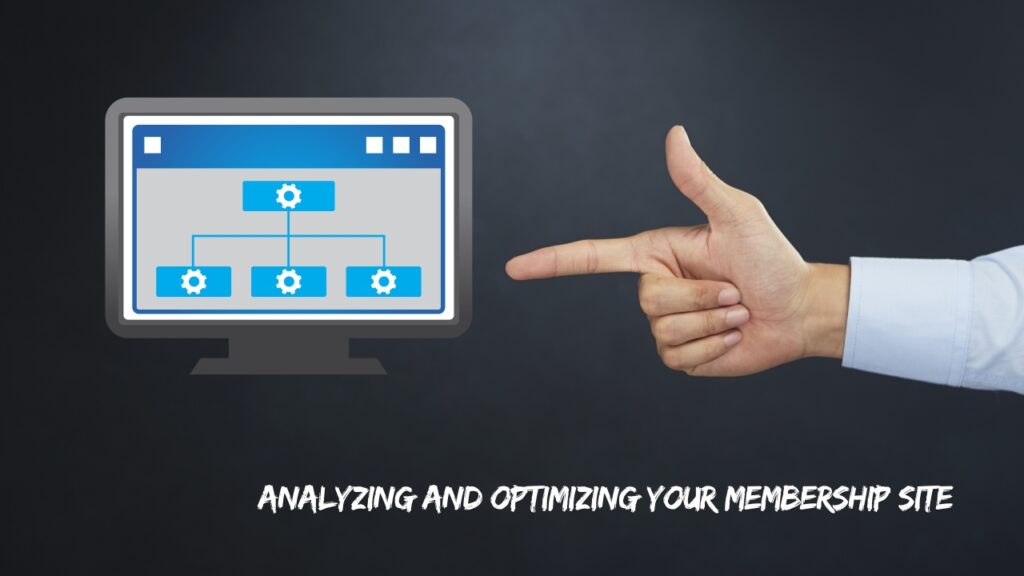Creating a membership site with WordPress can significantly enhance your business by offering exclusive content to paying members. This guide will walk you through the steps to set up a membership site on WordPress, providing detailed insights and practical advice to ensure your success.
Understanding Membership Sites
Membership sites offer exclusive content, products, or services to members who subscribe and pay a fee. These sites can range from educational platforms to community forums, fitness programs, and more. The primary goal is to provide value that encourages members to stay subscribed.
Membership sites are a fantastic way to build a loyal audience and generate recurring revenue. By offering exclusive content, such as tutorials, webinars, or downloadable resources, you create a sense of community and belonging among your members.
Benefits of Membership Sites
- Recurring Revenue: Subscription-based models provide a steady income stream.
- Community Building: Members often form a loyal community around your brand.
- Exclusive Content: Offer unique content that adds value and keeps members engaged.
- Customer Retention: High-quality content and community features can improve member retention rates.
Types of Membership Sites
- Educational Platforms: Offer courses, tutorials, and certifications.
- Community Forums: Create a space for discussions and networking.
- Fitness Programs: Provide workout plans, diet guides, and coaching.
- Subscription Boxes: Deliver monthly or quarterly products to members.
- Premium Content Sites: Offer exclusive articles, videos, and other resources.
Understanding the type of membership site you want to create will help you choose the right tools and strategies to ensure its success.
Choosing the Right Membership Plugin
Selecting the right membership plugin is crucial for your site’s functionality and user experience. There are several popular plugins available, each offering unique features.
Popular Membership Plugins for WordPress

MemberPress
- Features: Easy setup, robust access rules, drip content, and integrations with various payment gateways.
- Pricing: Starts at $149 per year.
Restrict Content Pro
- Features: Simple setup, content restriction options, and integration with popular email marketing services.
- Pricing: Starts at $99 per year.
Paid Memberships Pro
- Features: Flexible membership levels, content dripping, and multiple payment gateway integrations.
- Pricing: Free with paid add-ons available.
WooCommerce Memberships
- Features: integration with WooCommerce, flexible membership plans, and content drip.
- Pricing: Starts at $199 per year.
S2Member
- Features: Open-source, flexible membership options, and integration with various payment gateways.
- Pricing: Free, with a pro version available.
Factors to Consider When Choosing a Plugin
- Ease of Use: Ensure the plugin is user-friendly and easy to set up.
- Features: Look for features that match your site’s requirements, such as content dripping, payment gateways, and member management.
- Pricing: Consider your budget and the plugin’s cost-effectiveness.
- Support and Documentation: Check for available support and comprehensive documentation.
Choosing the right membership plugin will lay the foundation for a smooth and efficient setup process.
Setting Up Your WordPress Site
Before diving into the membership plugin setup, ensure your WordPress site is ready to host a membership site. This involves choosing a reliable hosting provider, selecting a suitable theme, and installing essential plugins.
Choosing a Hosting Provider
A reliable hosting provider ensures your site runs smoothly and can handle traffic spikes. Some popular hosting providers for WordPress include:
Selecting a Suitable Theme
Your theme should be compatible with your membership plugin and offer a professional and user-friendly design. Some recommended themes for membership sites are:
Installing Essential Plugins
Apart from your membership plugin, consider installing the following plugins for enhanced functionality:
- Yoast SEO: For optimizing your site’s SEO.
- WPForms: For creating contact and registration forms.
- WooCommerce: If you plan to sell products alongside memberships,.
- UpdraftPlus: For regular backups.
- MonsterInsights: For tracking site analytics.
Setting up your WordPress site with the right hosting, theme, and plugins will provide a solid foundation for your membership site.
Must Read: How to Add Google Maps to Your WordPress Site?
Installing and Configuring Your Membership Plugin

Once your WordPress site is set up, the next step is to install and configure your chosen membership plugin. This section will guide you through the process, using MemberPress as an example.
Installing MemberPress
- Purchase and Download: Buy MemberPress from their website and download the plugin file.
- Upload and Install: Go to your WordPress dashboard, navigate to Plugins > Add New, and upload the MemberPress plugin file. Click Install Now and Activate.
- Enter License Key: Go to MemberPress > Activate and enter your license key.
Configuring MemberPress
- General Settings: Navigate to MemberPress > Settings and configure the general settings, including your site’s currency and payment options.
- Payment Methods: Set up your payment gateways (PayPal, Stripe, etc.) under the Payments tab.
- Emails: Configure email notifications for members and admins under the Emails tab.
- Access Rules: Set up access rules to protect your content. Navigate to MemberPress > Rules and create rules for your membership levels.
Creating Membership Levels
- Add New Membership: Go to MemberPress > Memberships and click Add New.
- Set Membership Terms: Enter the membership name, description, and pricing details.
- Access Options: Configure access options, including content restrictions and expiration settings.
- Save and Publish: Save and publish your membership level.
Configuring your membership plugin properly ensures that your site runs smoothly and provides a great experience for your members.
Creating Membership Levels
Creating different membership levels allows you to offer various levels of access and benefits to your members. This can help attract a wider audience and increase your revenue.
Types of Membership Levels
- Free Membership: Offer basic access for free to attract users.
- Basic Membership: Provide access to standard content at a low cost.
- Premium Membership: Offer exclusive content and benefits at a higher price.
- VIP Membership: Provide top-tier benefits, such as one-on-one coaching or advanced resources.
Setting Up Membership Levels
- Define Benefits: Clearly outline the benefits and content available at each membership level.
- Set Pricing: Determine the pricing for each membership level based on the value provided.
- Create Membership Levels: Set up the membership levels in your membership plugin as described in the previous section.
- Promote Membership Levels: Use your website, email marketing, and social media to promote your membership levels.
Creating well-defined membership levels helps cater to different user needs and maximizes your site’s revenue potential.
Must Read: The Best WordPress Themes for Business Blogs in 2024
Setting Up Payment Gateways

A crucial part of running a membership site is accepting payments. Setting up reliable payment gateways ensures smooth transactions and enhances the user experience.
Popular Payment Gateways
- PayPal: Widely used and trusted, PayPal is easy to set up and supports recurring payments.
- Stripe: Offers flexible payment options, including credit cards and digital wallets.
- Authorize.Net: Provides advanced fraud protection and supports various payment methods.
- Square: Ideal for businesses that also have physical locations.
- Braintree: A PayPal service that supports multiple payment methods.
Configuring Payment Gateways
- PayPal: Sign up for a PayPal Business account and integrate it with your membership plugin.
- Stripe: Create a Stripe account, obtain the API keys, and configure them in your plugin.
- Authorize.Net: Set up an account, get the API credentials, and configure them in your plugin.
- Square: Sign up for Square, get the API keys, and set them up in your plugin.
- Braintree: Create a Braintree account, obtain the API credentials, and configure them in your plugin.
Setting up multiple payment gateways can provide flexibility and convenience for your members, increasing the likelihood of successful transactions.
Creating Protected Content
Protected content is the core of your membership site, offering value to your paying members. This content can include articles, videos, downloadable resources, and more.
Types of Protected Content
- Articles and Blog Posts: Offer in-depth articles and blog posts that provide valuable insights.
- Videos and Webinars: Provide exclusive video content, such as tutorials and webinars.
- Downloadable Resources: Offer downloadable resources, such as eBooks, templates, and worksheets.
- Courses and Tutorials: Create comprehensive courses and tutorials for members.
- Exclusive Forums: Set up private forums for members to discuss and network.
Protecting Content with MemberPress
- Create Content: Create the content you want to protect in WordPress.
- Set Access Rules: Go to MemberPress > Rules and create rules to restrict access to the content based on membership levels.
- Apply Rules: Apply the access rules to the content you want to protect.
- Publish Content: Publish the protected content on your site.
Providing high-quality protected content ensures that your members feel they are getting value for their subscription, leading to higher retention rates.
Must Read: How to Create a Custom WordPress Login Page in 2024?
Designing Your Membership Site
The design of your membership site plays a crucial role in user experience and engagement. A well-designed site can make it easier for members to navigate and find the content they need.
Tips for Designing Your Membership Site
- User-Friendly Navigation: Ensure your site is easy to navigate with clear menus and search functionality.
- Responsive Design: Make sure your site is mobile-friendly and looks great on all devices.
- Consistent Branding: Use consistent branding, including colors, fonts, and logos, to create a professional look.
- Engaging Layout: Use engaging layouts with images, videos, and interactive elements to keep members interested.
- Clear Call-to-Actions: Include clear call-to-actions to guide users towards subscribing, logging in, or accessing content.
Customizing Your Theme
- Theme Settings: Customize your theme settings to match your brand’s style.
- Page Builder Plugins: Use page builder plugins like Elementor or Beaver Builder to create custom page layouts.
- CSS Customization: Add custom CSS to further personalize your site’s design.
A well-designed membership site enhances the user experience, making it easier for members to engage with your content and stay subscribed.
Setting Up Member Registration and Login
A seamless registration and login process is essential for user satisfaction. It should be easy for members to sign up, log in, and access their content.
Setting Up Registration
- Create Registration Pages: Use your membership plugin to create registration pages.
- Customize Registration Forms: Customize the registration forms to collect necessary information from members.
- Add Registration Links: Add links to the registration pages on your site’s navigation menu and call-to-action buttons.
Setting Up Login
- Create Login Pages: Use your membership plugin to create login pages.
- Customize Login Forms: Customize the login forms to match your site’s design.
- Add Login Links: Add links to the login pages on your site’s navigation menu and header.
Managing Member Accounts
- Member Dashboard: Create a member dashboard where users can manage their accounts, view subscriptions, and access content.
- Account Settings: Allow members to update their personal information and subscription preferences.
A smooth registration and login process ensures that members can easily access your site and its content, improving their overall experience.
Managing Members and Content Access
Efficiently managing your members and their access to content is key to running a successful membership site. This involves setting up rules and automating processes to streamline management.
Member Management
- Member List: Use your membership plugin to view and manage the list of active members.
- Subscription Management: Handle subscription upgrades, downgrades, and cancellations.
- Automated Emails: Set up automated emails for registration, payment confirmation, subscription renewal, and more.
Content Access Management
- Access Rules: Create and manage access rules for different membership levels.
- Content Dripping: Schedule content to be released over time to keep members engaged.
- Content Restriction: Restrict access to specific content based on membership levels.
Reporting and Analytics
- Member Reports: Generate reports to track member activity and subscription trends.
- Content Performance: Analyze which content is most popular and engaging for your members.
- Revenue Reports: Track your site’s revenue and identify opportunities for growth.
Properly managing members and content access ensures a smooth operation and helps maintain high levels of member satisfaction.
Creating a Community for Your Members
Building a community around your membership site can significantly enhance member engagement and retention. A strong community creates a sense of belonging and encourages interaction among members.
Community Features
- Discussion Forums: Create private forums where members can discuss topics and share ideas.
- Live Chats and Q&A Sessions: Host live chats and Q&A sessions to interact with members in real time.
- Member Directory: Provide a directory of members to facilitate networking and collaboration.
- Social Media Integration: Integrate social media features to allow members to share content and connect outside of your site.
Encouraging Community Engagement
- Welcome Messages: Send welcome messages to new members to make them feel valued.
- Member Spotlights: Highlight active members to recognize their contributions.
- Exclusive Events: Host exclusive events, such as webinars or meetups, for members.
- Feedback and Suggestions: Encourage members to provide feedback and suggestions for improving the community.
Creating a vibrant community can significantly enhance the value of your membership site and encourage members to stay subscribed.
Marketing Your Membership Site
Marketing is essential to attract new members and grow your membership site. Utilize various marketing strategies to reach your target audience and convert visitors into paying members.
Effective Marketing Strategies
- Content Marketing: Create valuable content, such as blog posts, videos, and podcasts, to attract potential members.
- Social Media Marketing: Use social media platforms to promote your membership site and engage with your audience.
- Email Marketing: Build an email list and send regular newsletters with updates, promotions, and exclusive content.
- Paid Advertising: Invest in paid advertising, such as Google Ads and Facebook Ads, to reach a wider audience.
- Affiliate Marketing: Partner with affiliates to promote your membership site and earn commissions for each new member they refer.
Optimizing Your Marketing Efforts
- SEO: Optimize your site for search engines to attract organic traffic.
- Analytics: Use analytics tools to track the performance of your marketing campaigns and make data-driven decisions.
- A/B Testing: Conduct A/B tests to identify the most effective marketing strategies and improve conversion rates.
Effective marketing strategies help attract new members and grow your membership site, ensuring its long-term success.
Providing Customer Support
Providing excellent customer support is crucial for maintaining member satisfaction and retention. Ensure that members can easily get help when they need it.
Customer Support Channels
- Email Support: Offer email support for members to contact you with questions or issues.
- Live Chat: Provide live chat support for real-time assistance.
- Support Tickets: Use a support ticket system to manage and track member inquiries.
- Knowledge Base: Create a knowledge base with articles and tutorials to help members find answers to common questions.
Improving Customer Support
- Response Time: Aim to respond to member inquiries promptly.
- Helpful Resources: Provide helpful resources, such as FAQs and video tutorials, to assist members.
- Feedback: Collect feedback from members to improve your support services.
Providing excellent customer support ensures that members feel valued and helps maintain high levels of satisfaction and retention.
Must Read :Top 5 WordPress Themes for Photographers?
Analyzing and Optimizing Your Membership Site

Regularly analyzing and optimizing your membership site is essential to ensuring its success and growth. Use data to make informed decisions and improve the overall experience for your members.
Key Metrics to Track
- Member Growth: Track the number of new members and overall growth rate.
- Member Retention: Monitor retention rates and identify factors that influence member loyalty.
- Content Engagement: Analyze which content is most popular and engaging for members.
- Revenue: Track your site’s revenue and identify opportunities for growth.
Tools for Analysis
- Google Analytics: Use Google Analytics to track website traffic and user behavior.
- Membership Plugin Reports: Utilize reports generated by your membership plugin to track member activity and trends.
- Survey Tools: Use survey tools to collect feedback from members and identify areas for improvement.
Optimization Strategies
- Content Updates: Regularly update and improve your content to keep it relevant and valuable.
- User Experience: Continuously improve the user experience based on feedback and data analysis.
- Marketing Campaigns: Optimize your marketing campaigns to attract and retain more members.
Regular analysis and optimization help ensure the long-term success of your membership site, keeping it relevant and valuable to your members.
Must Read: How to Add Video Backgrounds to Your WordPress Site?
FAQs
What are the benefits of creating a membership site with WordPress?
Creating a membership site with WordPress allows you to monetize your content, build a community, and provide value to your audience through exclusive content and resources.
Which membership plugins are recommended for WordPress?
Popular membership plugins for WordPress include MemberPress, Restrict Content Pro, Paid Memberships Pro, WooCommerce Memberships, and S2Member.
How do I protect content on my membership site?
You can protect content on your membership site by using membership plugins to create access rules that restrict content based on membership levels.
What payment gateways can I use for my membership site?
Common payment gateways for membership sites include PayPal, Stripe, Authorize.Net, Square, and Braintree.
How can I improve member engagement on my site?
You can improve member engagement by providing high-quality content, building a community, hosting exclusive events, and offering excellent customer support.

